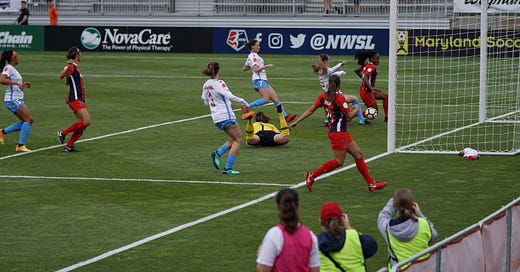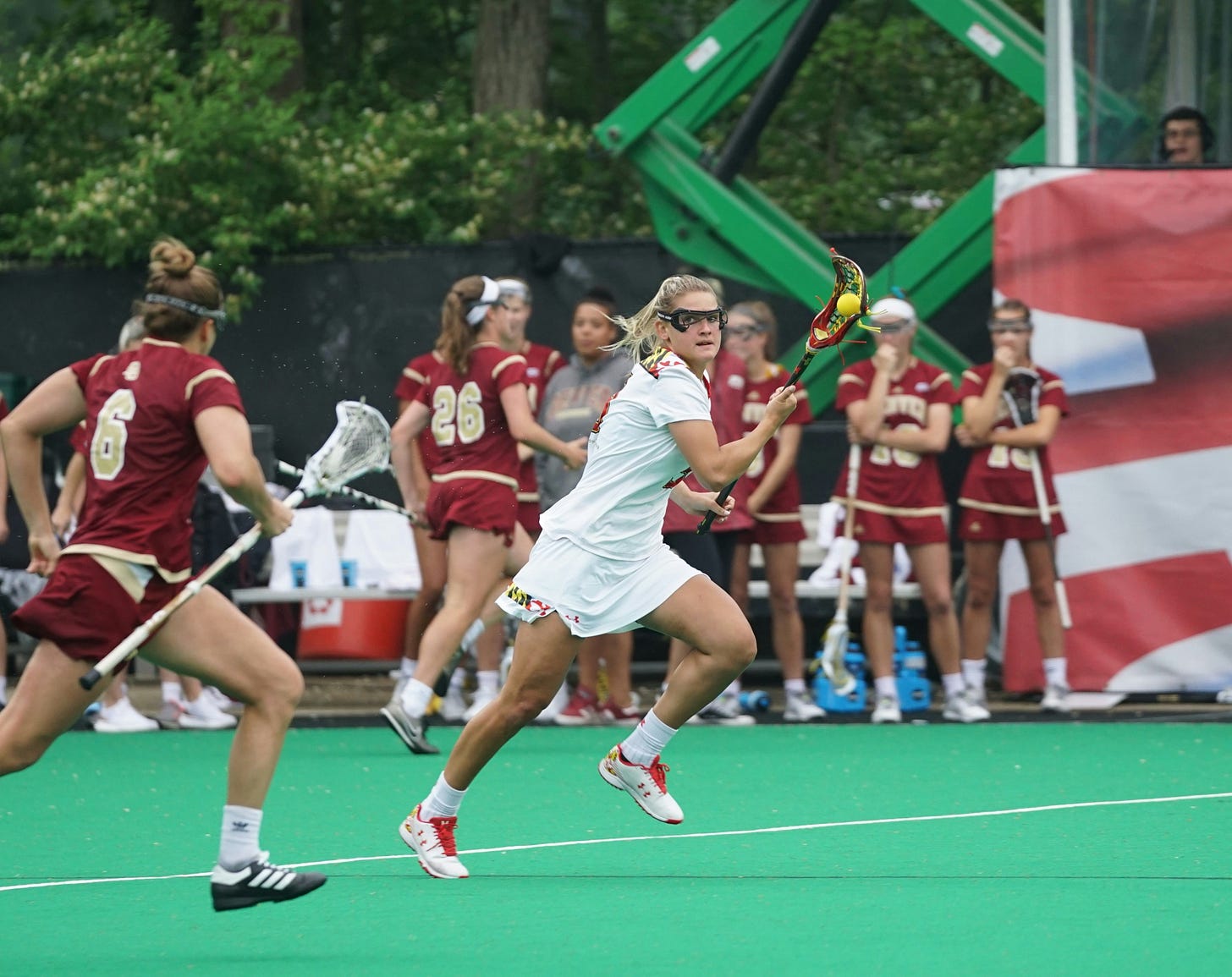The Numbers Don't Lie: Women's Sports Just Hit Different in 2025
A Deep Dive into Parity's Latest Survey Reveals Why Brands Can't Afford to Ignore the Women's Sports Boom
Hello sports tech enthusiasts 👋🏼 Welcome to Regen Sports, your twice-weekly deep dive into the intersection of sports and technology. Every Monday, catch up on the week's most important developments in sports innovation, and every Thursday, explore in-depth analysis of trends, companies, and technological breakthroughs reshaping the future of sports.
It had been a while since I’d covered a report so I figured I’d break down one that I found to be significant. Hence, I’m sharing it today. We’ve seen the revolution that is women’s sports, and in particular, there’s a company that makes it their business. Parity is a leading platform for professional women athlete partnerships. Their mission to close the gender income gap in sports and beyond. They have recently released their 2025 U.S. Women's Sports Survey which delivers the hard data proving what we've all been witnessing: this market has officially exploded beyond anyone's wildest projections.
The $1.8 Billion Reality Check
Let's start with the headline number that should make every sports executive do a double-take. Deloitte predicted women's sports would cross the $1 billion threshold in 2024. They were conservative. The actual figure? $1.8 billion—crushing their projection by $600 million. That's not growth, that's a seismic shift.
What Fans Are Actually Watching
Basketball remains the undisputed queen of women's sports, with 63% of U.S. women's sports fans tuning in—that's up from 56% just last year. Here's the kicker: women's basketball viewership among women's sports fans (63%) now outpaces men's basketball among male sports fans (51%).
The WNBA leads the league popularity contest with 51% of women's sports fans identifying as supporters. Soccer and tennis are also performing significantly better in women's formats compared to their male counterparts among respective fan bases. Meanwhile, newer professional leagues like softball and hockey are still finding their footing, with the PWHL sitting at 4% but showing promise in key markets like the Northeast and Midwest.
Trust Is the New Currency
Here's where it gets interesting for brand partnerships. Professional women athletes have become trust powerhouses across all demographics. Trust in women athletes promoting products has surged across every group measured—including a surprising 6-point jump among people who never watch women's sports, reaching 58%.
The biggest trust gains came from men who watch women's sports (+8 points) and frequent viewers (+6 points). This isn't just about reaching existing fans anymore; it's about tapping into broader cultural credibility.
The Sponsorship Sweet Spots
When it comes to brand categories, three sectors dominate the sponsorship awareness landscape:
Apparel (55%) - Led by Nike's massive presence
Food & Beverage (33%)
Health & Beauty (32%)
But here's where it gets strategic. Women watching women's sports show 71% awareness of apparel sponsorships versus 58% for men. Meanwhile, men are more tuned into restaurant (41% vs 38%), banking (25% vs 17%), and automotive (22% vs 13%) partnerships.
The purchase intent numbers tell an even more compelling story. Nearly a quarter (24%) of women's sports fans say they're more likely to buy from brands sponsoring women's sports. For women watching women's sports specifically, apparel sponsorships drive the highest purchase likelihood at 40%.
What Fans Actually Want from Brands
The winning formula isn't rocket science, but it requires nuance. Fans want a dual approach: asset sponsorship (leagues, teams, tournaments) combined with direct athlete partnerships. The athlete connection provides authenticity and storytelling flexibility that traditional sponsorships can't match.
Younger demographics are driving this trend hard. Gen Z and Millennials are 46% more likely to purchase from brands sponsoring individual women athletes or teams, compared to 36% and 34% respectively for all sports fans.
The activation sweet spots? Cause-driven campaigns and athlete-designed products both hit 36% engagement among women's sports watchers. Men gravitate more toward cause campaigns, while women prefer product collaborations.
The Full-Funnel Impact
This isn't just about warm feelings and brand awareness—though those benefits are real. The survey shows genuine conversion happening throughout the purchase funnel:
Most respondents agree women's sports sponsorship boosts brand awareness
Brands get perceived as progressive and forward-thinking
Over half of women watching women's sports report increased brand trust
Nearly half are likely to purchase from supporting brands
One in five women's sports fans have already made purchases due to sponsorship
That last point is crucial. We're not talking about future potential—actual transactions are happening right now.
Why This Matters for Sports Tech
As a sports tech newsletter, we're breaking down this report because the infrastructure supporting women's sports is fundamentally changing, and technology sits at the center of that transformation. The $1.8 billion market isn't just about ticket sales and TV deals—it's creating demand for everything from advanced analytics platforms to fan engagement apps to athlete performance tracking systems.
The trust and authenticity that women athletes command makes them ideal partners for sports tech companies looking to build credibility in an increasingly crowded market. When 67% of daily women's sports watchers are more likely to purchase from brands sponsoring women athletes, that's not just a marketing insight—it's a product distribution strategy.
The data also reveals sophisticated fan behaviour that sports tech platforms need to accommodate. These aren't casual viewers; they're engaged consumers making purchasing decisions based on brand partnerships. The platforms, apps, and tools serving this audience need to reflect that level of sophistication and engagement.
Most importantly, this survey confirms that women's sports has moved from an "emerging market" to a cornerstone of the broader sports ecosystem. Any sports tech company not considering how their products serve this audience is missing a massive opportunity in what's clearly become one of the fastest-growing segments in all of sports. As always, stay tuned for next week's roundup as we continue tracking the transformative developments reshaping the global sports technology landscape.
Track the Trends. Spot the plays. Shape the game.
Thanks for reading,
Dean
P.S. If you found this newsletter valuable, please consider subscribing. The sports tech industry grows stronger when we learn together.





